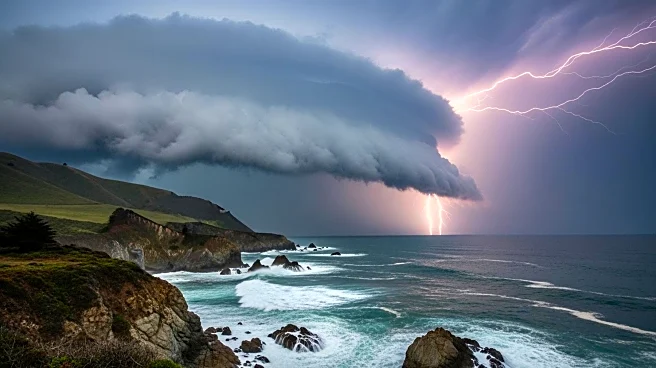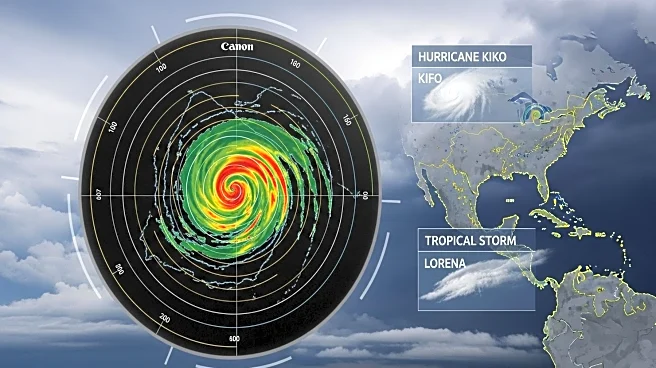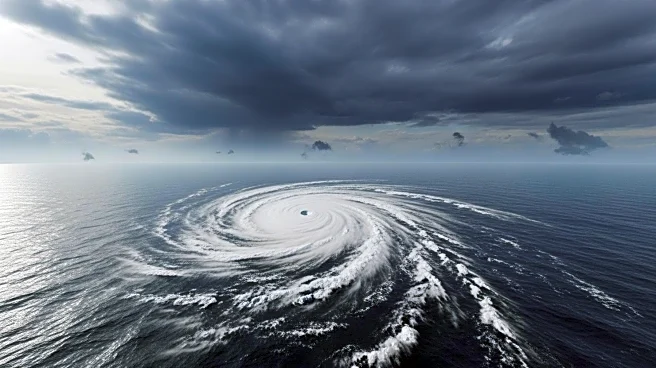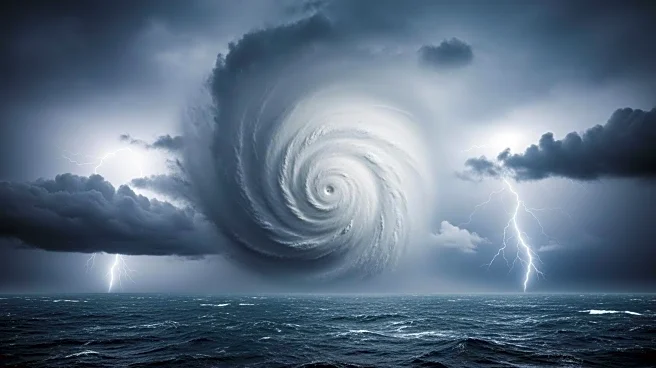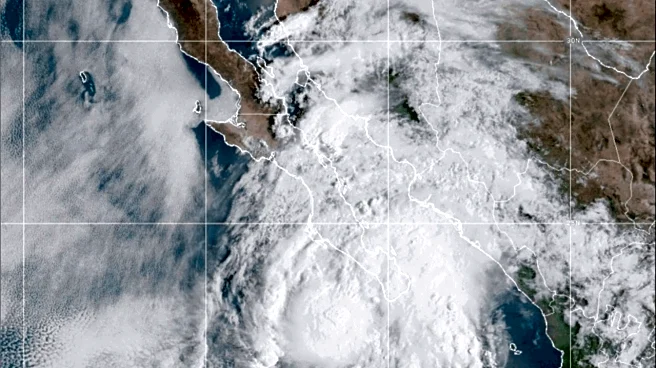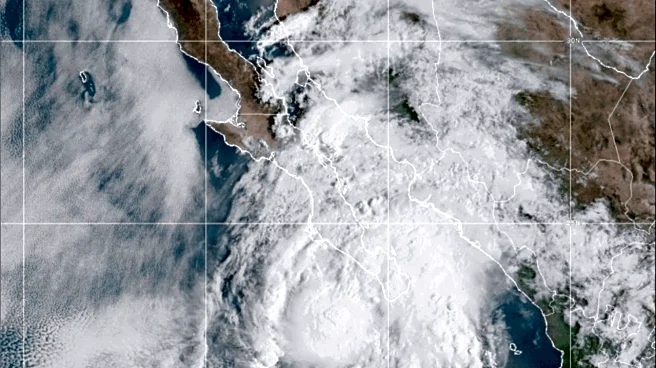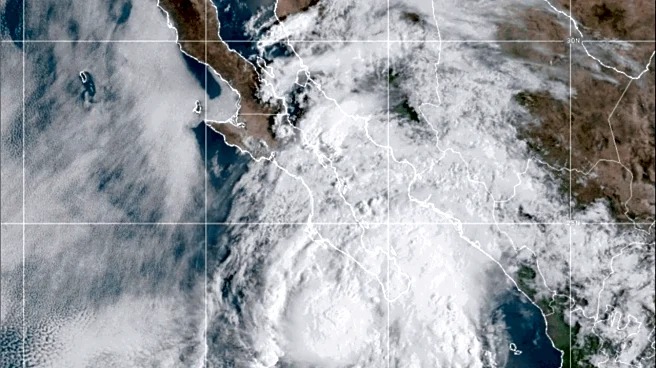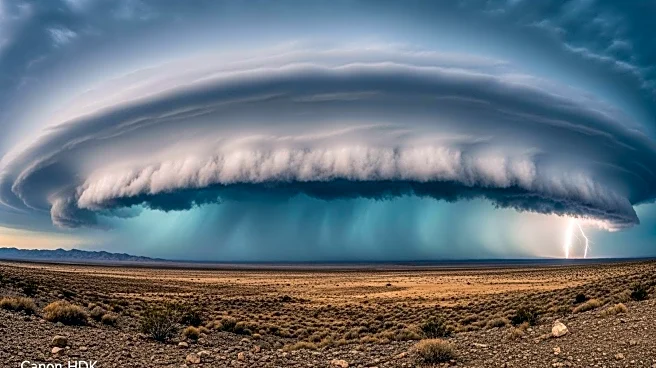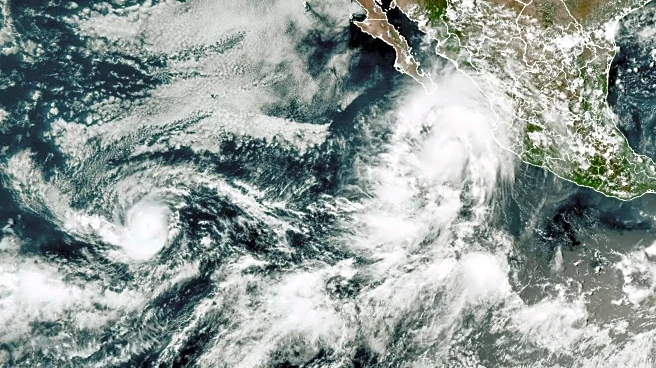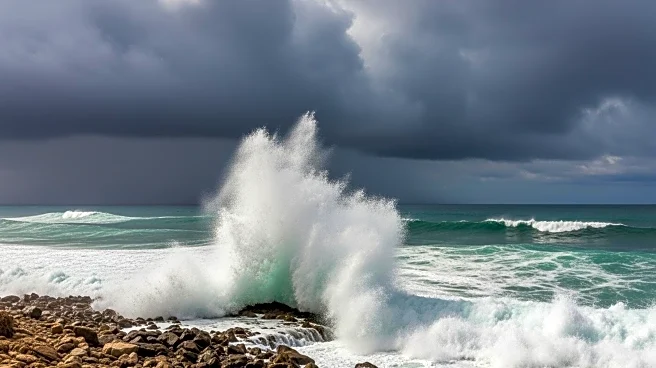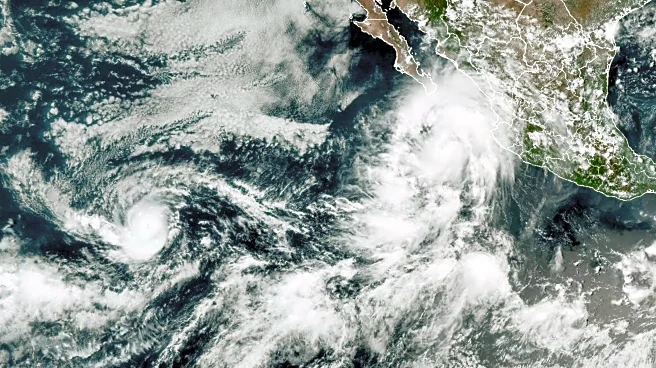What is the story about?
What's Happening?
Hurricane Lorena has weakened and is expected to downgrade to a tropical storm, according to the U.S. National Hurricane Center. Despite the weakening, there remains a significant risk of life-threatening flash floods and mudslides along Mexico's west coast, particularly in Baja California Sur, Baja California, and Sonora. The storm, with maximum sustained winds of 80 mph, is moving northwest and could bring up to 15 inches of rain in some areas. The U.S. Southwest, including Arizona and New Mexico, is also under watch for potential flash flooding due to heavy rainfall.
Why It's Important?
The weakening of Hurricane Lorena is crucial for the affected regions as it reduces the immediate threat of severe wind damage. However, the risk of flash floods and mudslides remains a serious concern, potentially impacting communities and infrastructure in Mexico's west coast. The heavy rainfall could lead to significant disruptions, including road closures and evacuations, affecting local economies and public safety. In the U.S. Southwest, the potential for flash flooding could impact agricultural activities and water management systems, highlighting the need for preparedness and response strategies in these areas.
What's Next?
Authorities in Mexico and the U.S. Southwest are likely to continue monitoring the storm's progress and issue warnings as necessary. Emergency services may be mobilized to assist affected communities, and residents are advised to stay informed and take precautionary measures. The storm's trajectory remains uncertain, and its impact will depend on whether it makes landfall or dissipates over open water. Meanwhile, Hurricane Kiko, another storm in the Pacific, is expected to weaken gradually, posing no immediate threat to land.
AI Generated Content
Do you find this article useful?
